O eclipses These are spectacular astronomical events that usually mobilize hundreds of thousands of people in search of getting the best view of these phenomena.
Something that should happen again next Monday, April 8, where it is estimated that around 31 million people will be able to witness a total solar eclipse.
LOOK: 5 keys to understanding Mexico’s diplomatic crisis with Ecuador after the police raid on the Mexican embassy in Quito
The “band of totality”, which forms when the Moon passes between the Sun and the Earth, completely blocking the face of the Sun, will cross the three North American countries at more than 2,500 km/h over the surface of Mexico, the United States United States and Canada.

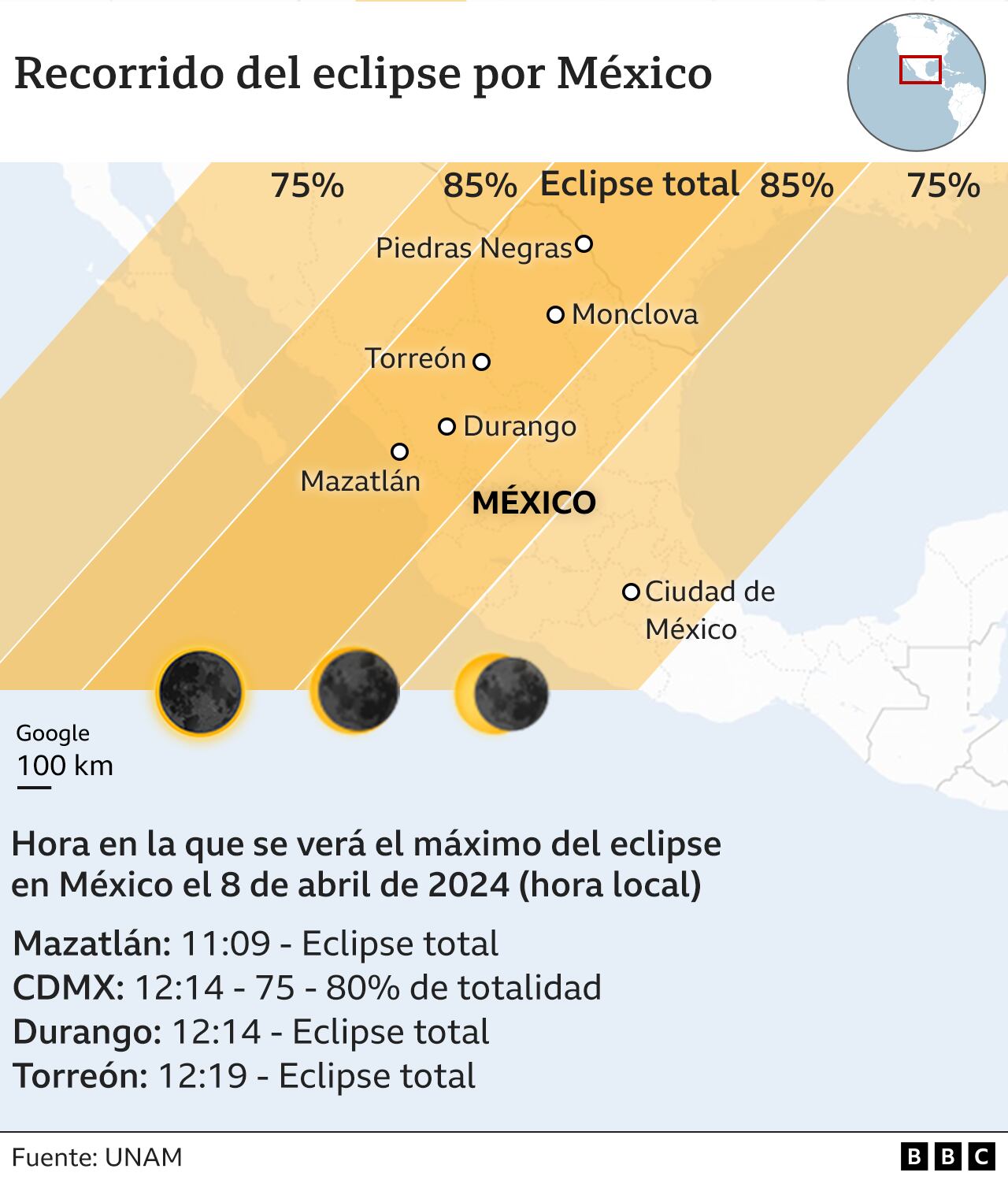
But a total solar eclipse is just one of several varieties of this phenomenon.
“In general terms, there are two types of eclipses: those of the Moon and those of the Sun,” writes Juan Carlos Beamín, an astrophysicist at the Center for Scientific Dissemination at the Autonomous University of Chile, in his recent book “Astronomia Ilustrada”. “
But he notes: “Technically there is a third type that involves two stars.”
At BBC Mundo we tell you what these three and their different variants are like.
Solar eclipses
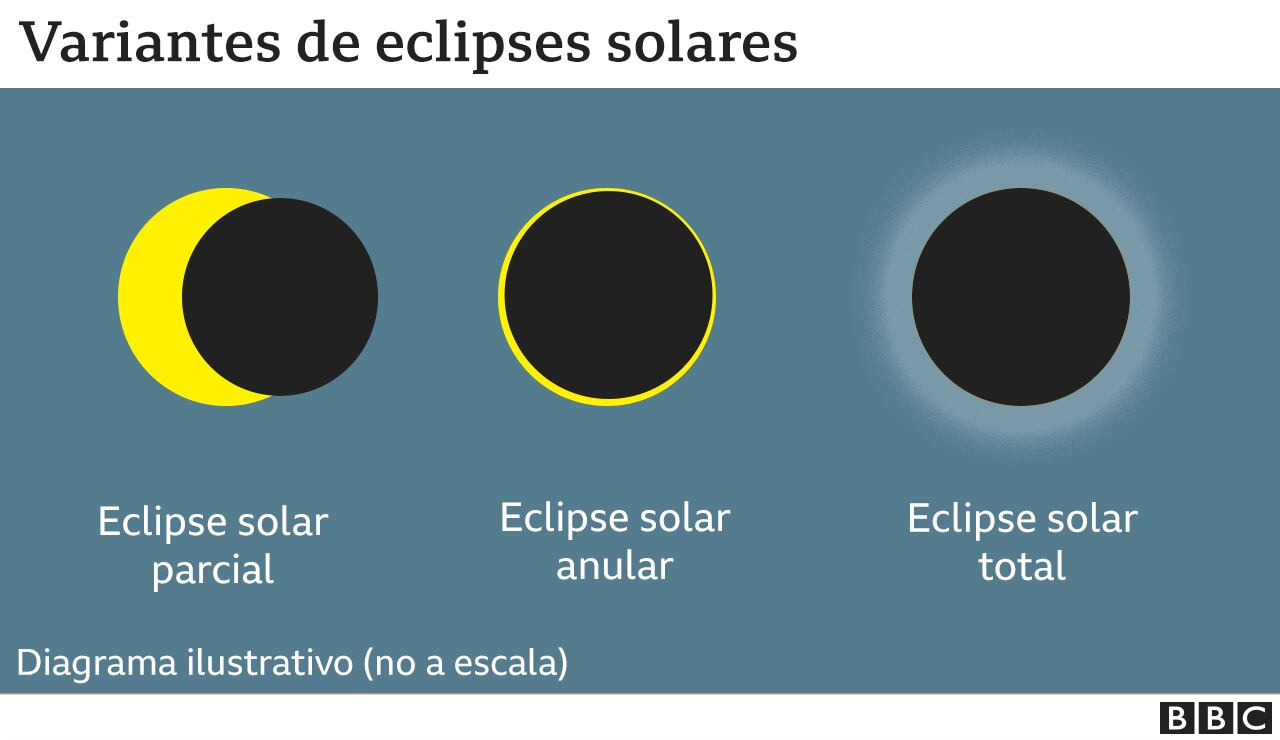
Sometimes, when the Moon orbits the Earth, it comes between the Sun and our planet, blocking the star’s light and causing a solar eclipse.
In other words, what the Moon does is cast a shadow on Earth.
There are three types of solar eclipses that differ in how much and how the Moon covers the Sun.
1. Total solar eclipse
A total solar eclipse occurs when the Sun, Earth and Moon align in such a way that the Moon completely blocks sunlight.
So much so that, for seconds or even minutes, the sky becomes so dark that it looks like night.
In the words of NASA, “total solar eclipses are only possible on Earth due to a celestial coincidence.”
The Sun is 400 times wider than the Moon, but it is also 400 times further away.
“This geometry means that when they align perfectly, the Moon blocks the entire surface of the Sun, creating a total solar eclipse,” adds NASA.
The path of the Moon’s shadow across the Earth’s surface is called the “band of totality” and it is in this small area that this spectacle of total darkness can be seen.
________________________________________
At BBC Mundo we will broadcast the eclipse live on our channels. TikTok It is YouTube. Let’s see it together!
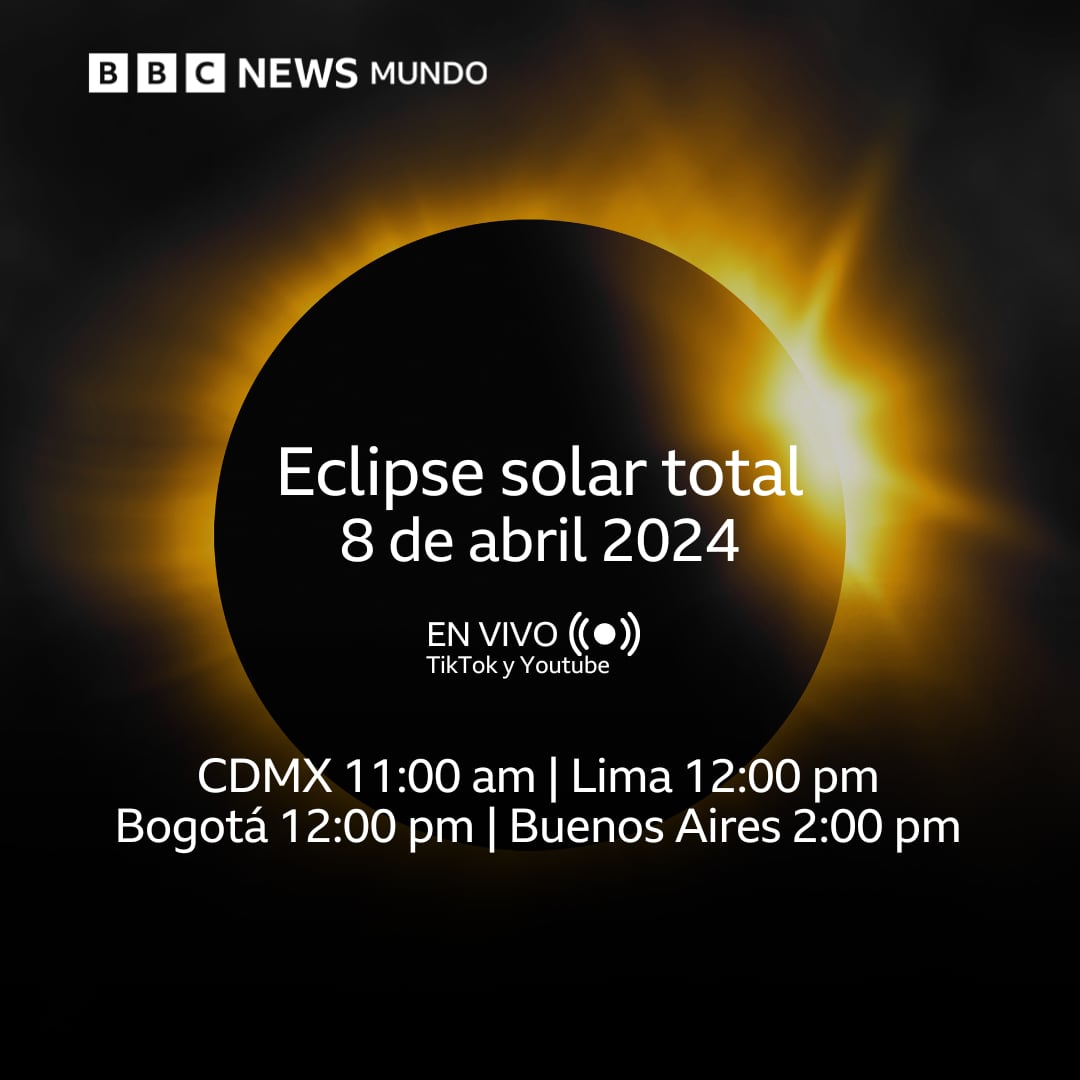
On both sides of this band an expanse thousands of kilometers wide is generated, from where the eclipse is partially seen.
The further you are from the band of totality, the smaller the fraction of the solar area that is eclipsed.
As for duration, it depends “on the position of the Earth in relation to the Sun, the Moon in relation to the Earth and which part of the Earth is being obscured”, writes Beamín.
“Theoretically, the longest solar eclipse could last 7 minutes and 32 seconds”, adds the Chilean astrophysicist.
As for frequency, they are not as rare as often believed, as they occur approximately every 18 months.
What is really rare is for a total solar eclipse to be visible from the same place, such as a certain city, something that happens on average every 375 years.
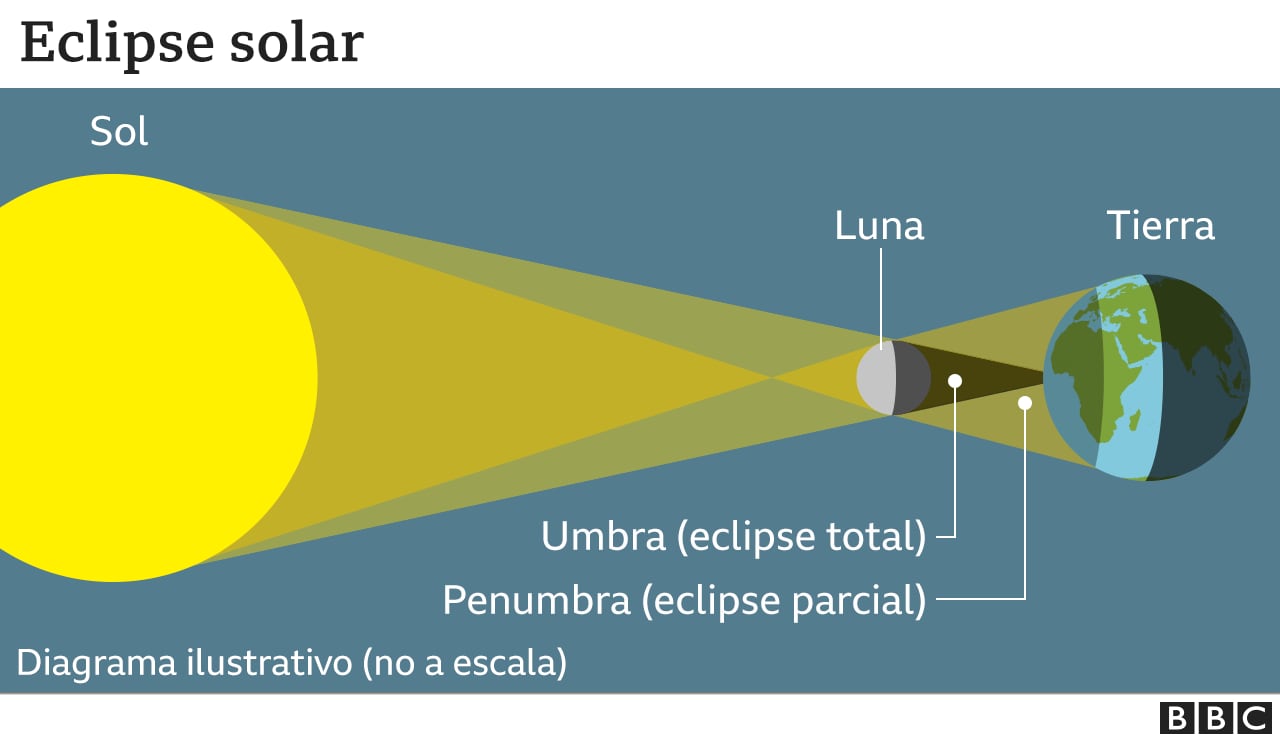
2. Annular Eclipse
When the Moon is furthest from Earth and is “smallest,” it does not completely cover the surface of the Sun.
Then, a ring of the Sun is generated around the Moon, an event called an annular solar eclipse.
Analogous to what happens during a total solar eclipse, during this phenomenon a “band of annularity” is generated in which the eclipse is seen as a ring.
On both sides of this trajectory, in turn, a zone of partiality is generated.
This is what happened on October 14, 2023, for example, where the annular band of this type of eclipse crossed parts of the United States, Mexico, Guatemala, Honduras, Nicaragua, Costa Rica, Panama, Colombia and Brazil.
According to NASA, these eclipses tend to be the longest, as the ring can even be glimpsed for more than ten minutes, although they usually don’t last more than five or six.
3. Hybrid Eclipse
Beamín explains that the hybrid eclipse is a phenomenon that occurs “when the Moon is precisely at the distance at which it would be able to completely cover the Sun, but, as it advances, it moves slightly away from the Earth and stops eclipsing the Sun. up in an annular eclipse.”
He continues: “It could also start out as an annular eclipse and then get a little closer to becoming a total eclipse.”
These eclipses constitute just 4% of solar eclipses, according to the Canary Islands Astrophysics Institute (IAC).
According to NASA data, the last one occurred in 2023, being visible in Indonesia, Australia and Papua New Guinea, and the next one will only happen on November 14, 2031.
lunar eclipses
A lunar eclipse occurs when the Earth blocks the path of light from the Sun to the Moon.
In other words, during a lunar eclipse, what is seen is the Earth’s shadow projected on its natural satellite.
As an IAC teaching guide explains, “the visibility of solar eclipses depends on the geographic location of the observer.”
“On the contrary, in lunar eclipses the phenomenon is observed from any place on our planet where the Moon is above the horizon at the time of the eclipse.”
Furthermore, it is added, “unlike solar eclipses, in which the timing of the eclipse phases depends on the geographic position of the observer, in lunar eclipses these will be the same, regardless of the location of observation”.
There are also three types of lunar eclipses.
1. Total lunar eclipse
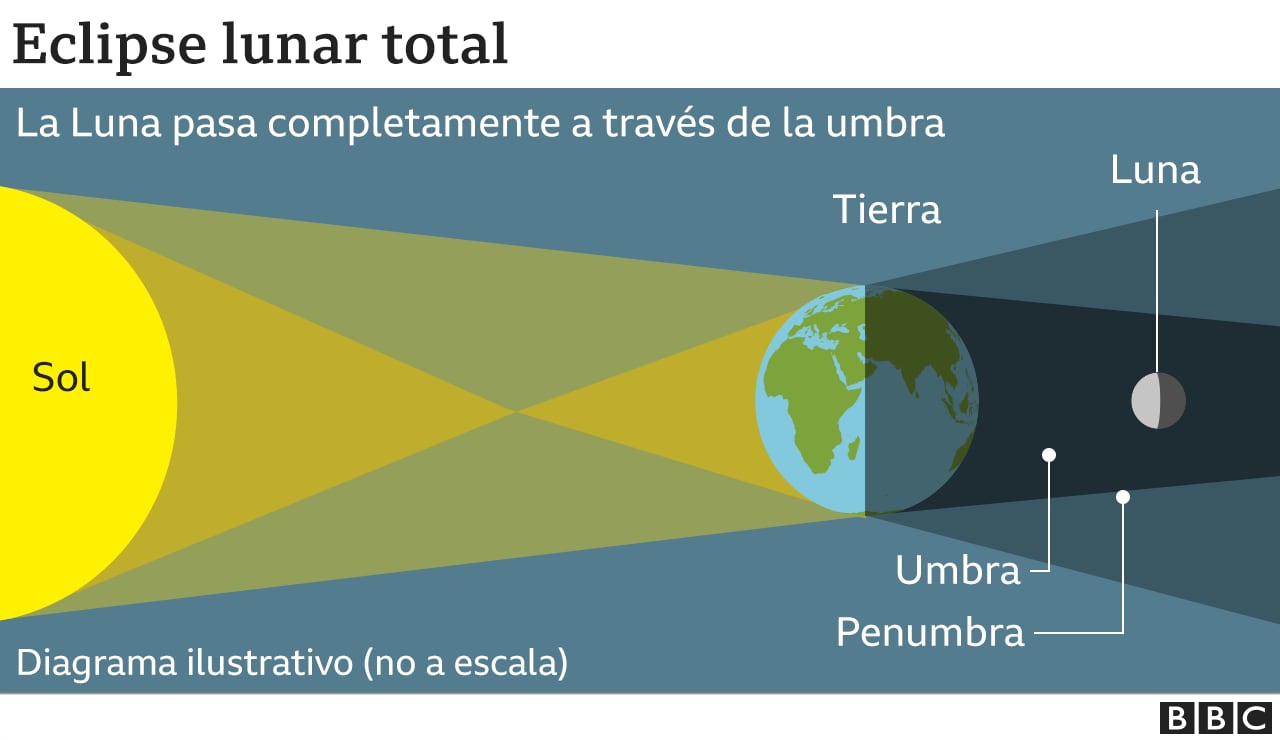
During a total lunar eclipse, NASA explains, the Moon and Sun are on exactly opposite sides of the Earth.
“Although the Moon is in the Earth’s shadow,” NASA clarifies, “part of the sunlight reaches the Moon.”
This sunlight passes through Earth’s atmosphere, which filters out most of the blue light.
That is why, during this phenomenon, the natural satellite appears red and is nicknamed the “Blood Moon”.
According to the IAC, “as the diameter of our planet is four times greater than that of the moon, its shadow is also much wider, meaning that the totality of a lunar eclipse can last up to 104 minutes”.
2. Partial lunar eclipse
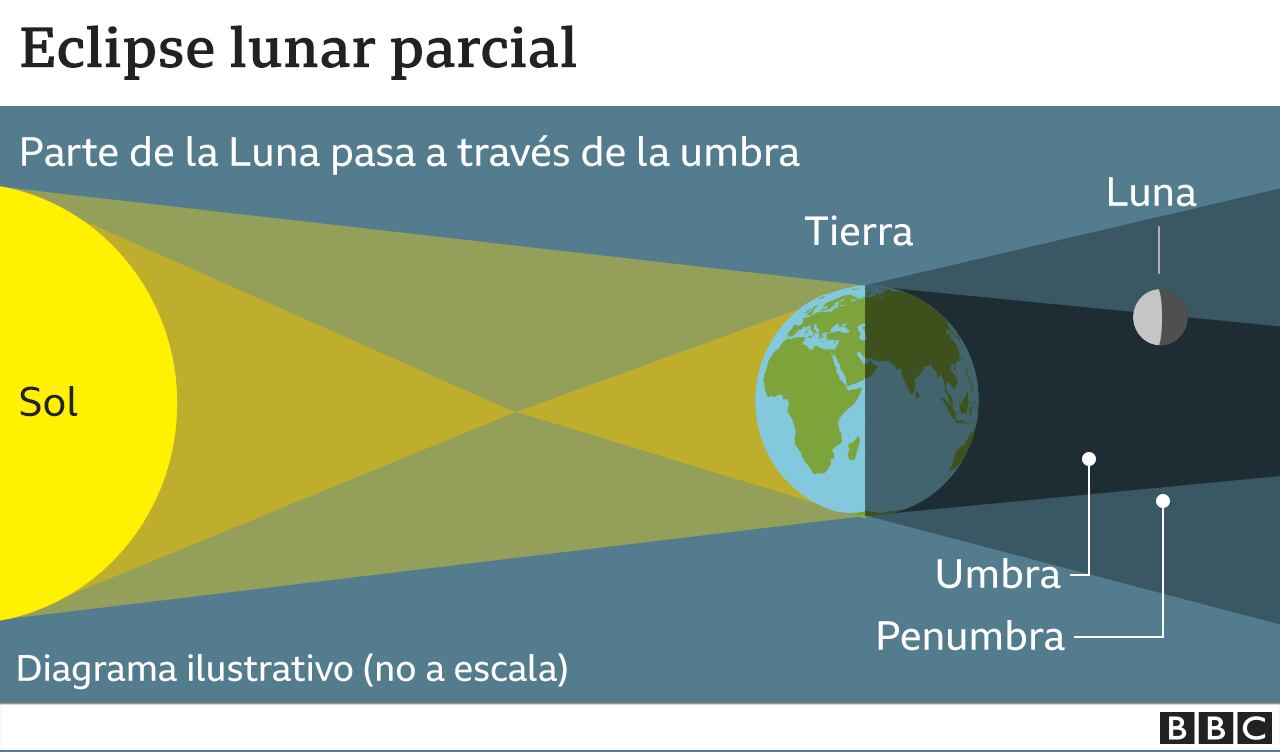
As its name suggests, a partial lunar eclipse occurs when only a part of the Moon enters the Earth’s shadow.
Depending on the magnitude of the eclipse, a dark red, rusty or simply charcoal gray color may appear on the shadowed part of the lunar surface.
This is due to the contrast between this part and the other bright part of the Moon that remains out of shadow.
According to NASA, although total lunar eclipses are rare phenomena, partial eclipses occur at least twice a year.
3. Penumbral lunar eclipse

A penumbral lunar eclipse occurs when the Moon passes through the Earth’s penumbral shadow, that is, a much fainter shadow.
Therefore, these eclipses are so subtle that their perception to the human eye depends on the lunar portion that enters the penumbral region: the smaller it is, the more difficult it will be to observe.
This is why these eclipses are often not even mentioned in unscientific consumer calendars.
Stellar eclipses
Not all eclipses are linked to the Sun and Moon: there are also eclipses of distant stars.
“50% of stars are double systems or more stars”, explains Beamín in his book “Astronomia Ilustrada”, available for free online.
“Because there are so many stars in our galaxy, some of these binary stars orbit in a plane that is closely aligned with the Earth, so in a certain part of their orbit, one star passes in front of the other and blocks the brightness of what is left behind. back”, he adds.
“These double stars are called eclipsing binary stars.”
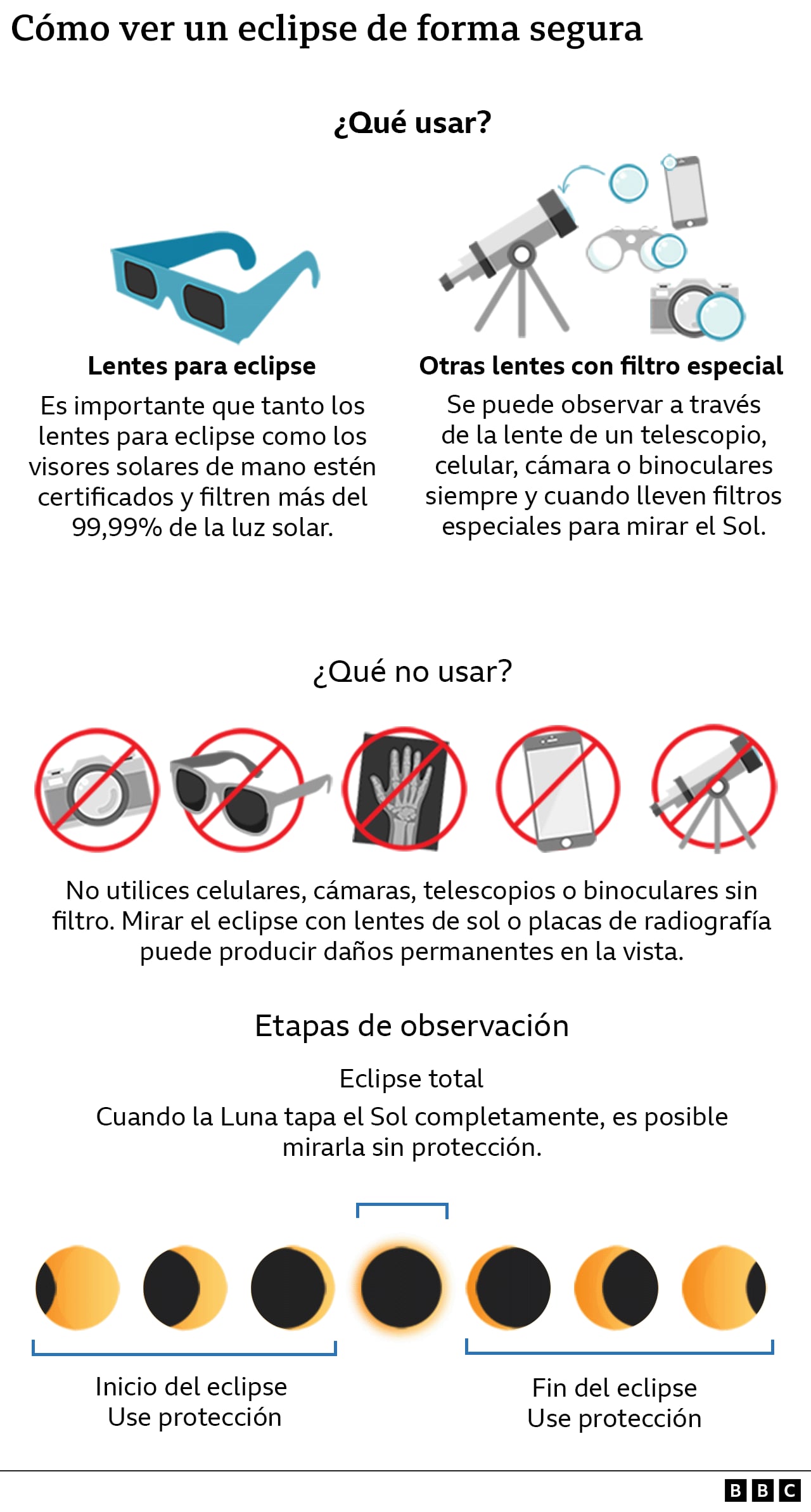
Source: Elcomercio
I am Jack Morton and I work in 24 News Recorder. I mostly cover world news and I have also authored 24 news recorder. I find this work highly interesting and it allows me to keep up with current events happening around the world.

:quality(75)/cloudfront-us-east-1.images.arcpublishing.com/elcomercio/FGZQFGVVFRBYXOK24W2M7N33WY.jpg)

:quality(75)/cloudfront-us-east-1.images.arcpublishing.com/elcomercio/46T6IPFMYJE4FASQSIEJG4ENZI.jpg)

:quality(75)/cloudfront-us-east-1.images.arcpublishing.com/elcomercio/3FPN7BXXWRHYFJVRDEXG77LLTI.jpg)

